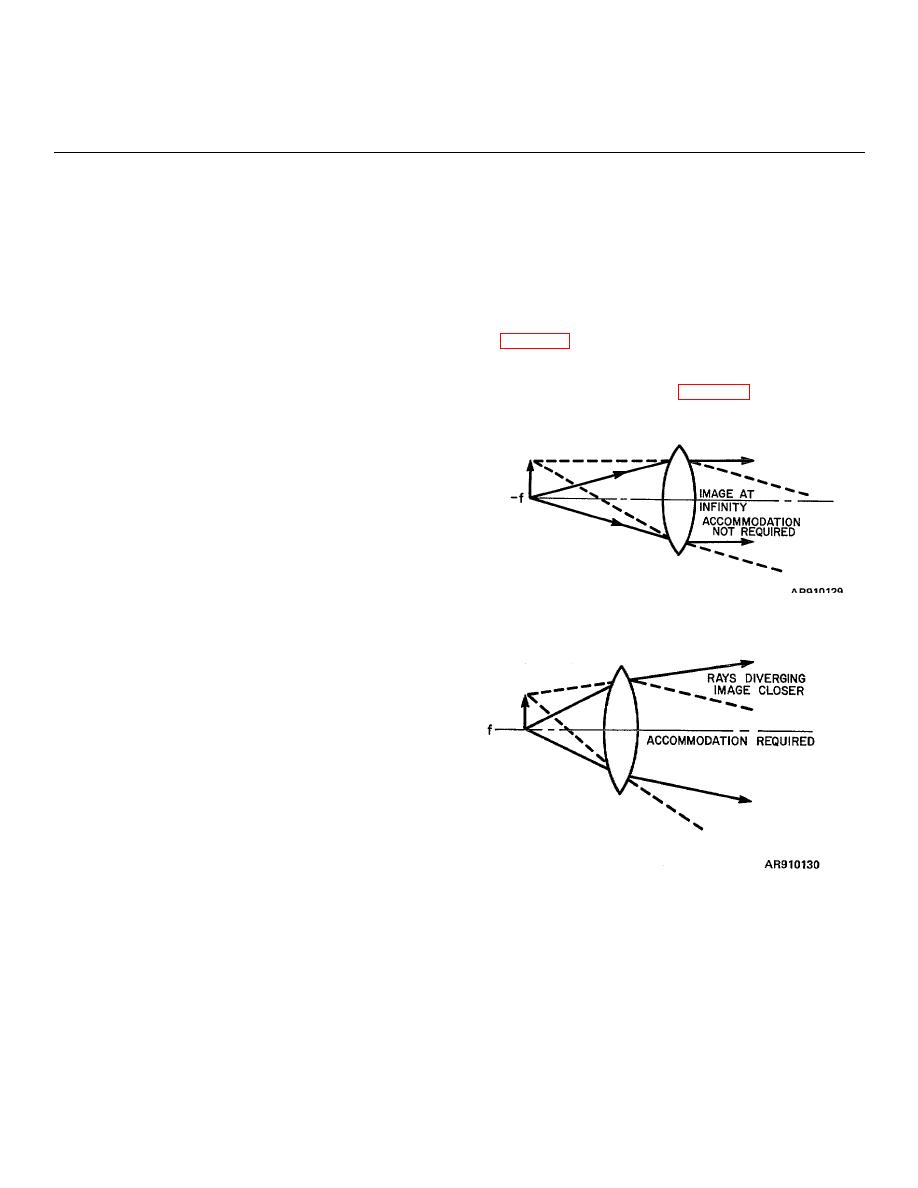 |
|||
|
|
|||
|
Page Title:
CHAPTER 5 ELEMENTARY PRINCIPLES OF TELESCOPES |
|
||
| ||||||||||
|
|
 TM 9-258
CHAPTER 5
ELEMENTARY PRINCIPLES OF TELESCOPES
Section I. INTRODUCTION
the eye. It should be remembered that rays from a
5-1. History of Optical Instruments. The earliest
distant point are, for all practical purposes, parallel and
record of the use of a lens as a magnifier is estimated to
that the eye can focus or form an image with these
have been in the eleventh century and attributed to an
parallel rays without accommodations. If the object is at
Arabian philosopher names Alhazen. In the thirteenth
the focus (focal point) of the lens, it is seen by the eye
century, spectacles were devised based on work done
without accommodation as the emergent rays are then
both by Roger Bacon and by a Florentine monk named di
parallel (as if originating at a distant object) as illustrated
Spina. But as the seventeenth century opened, nobody
in figure 5-1. If the object is within the focal length of the
had as yet devised a telescope. Quite by accident a
lens, accommodation by the eye is necessary as the
Dutch optician, Jan Lippershey, made the discovery in
emergent rays no longer are parallel but are diverging,
1608. His telescope used a 1 1/2-inch diameter positive
as if from a near object, as in figure 5-2.
(convergent) objective lens of 18-inch focal length and a
negative (divergent) eyelens of 2-inch focal length.
Lippershey was refused a patent by the Dutch
government because of confusing counterclaims from
supposed competitors but in the spring of 1609 the
Italian scientist Galileo carried on the work.
He
duplicated the original using an instrument of 8 power.
Not satisfied, he made another instrument 37 inches long
of 8 power and still another 49 inches long with a very
short focus eyepiece giving 33 power. His famous
astronomical discoveries were made with the latter
instrument and the optical system he used is still known
as the Galilean telescope. A refracting astronomical
telescope of modern design, using a positive objective
Figure 5-1. Simple magnified-object at principal focus
lens, and a positive eyelens, was designed by the
German astronomer Kepler in 1610 and some 30 years
later a Scottish mathematician named Gregory designed
the first reflecting telescope which is the basis of many
modern astronomical instruments. In the latter part of
the nineteenth century, buffalo hunters on our western
plains used telescopic sights on their rifles.
The
telescopic sight, the most accurate of all sighting
devices, is too easily damaged to be an item of issue
with the infantry rifle except those weapons used by
snipers. It is used, however, on all types of field pieces
and Naval rifles. The remainder of this text is devoted
mainly to a study of the principles involved in such
applications of telescope as telescopic sights and
observation instruments.
5-2. Simple Magnifier. The simple magnifier consists
Figure 5-2. Simple magnifier-object within focal length
of a positive (converging) lens at the first focal plane of
the eye, although this positioning is not too important. If
5-3. Compound Microscope. The real purpose of the
the object being viewed is at or within the focal point of
microscope is to aid the human eye, essentially a long-
the lens, a virtual, erect, and enlarged image is seen by
range high-acuity instrument, to be useful at short dis-
5-1
|
|
Privacy Statement - Press Release - Copyright Information. - Contact Us |